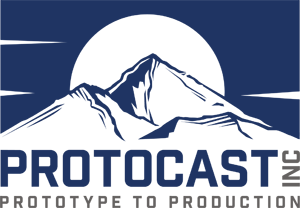
December 16, 2016 | Prototype Casting
The History of Metal Casting
Throughout human history, mankind has sought out to make things easier, more efficient, and more sustainable to benefit themselves as well as generations to come. The reduction in labor since early times is a major payoff when it comes to innovation. For millennia, mankind has manipulated the natural resources available on earth in order to ensure its survival and improve its overall quality of life.
Prototype Casting is carrying on the ancient legend of casting, but with a highly mechanized, streamlined and efficient modern twist. Since early mankind shaped bowls, tools, and weapons out of stones and wood, to discovering precious metals that were eventually melted and shaped into other useful tools, casting plays a fundamental role in mankind’s evolution. Due to the importance of metal casting, we here at Prototype casting felt it necessary to outline the history of metal casting, to provide greater context for the work that we do as a machine shop.
Beginnings
After man shaped bowls, tools, and weapons out of stones and wood, man eventually discovered other elements that had potential to be of great use. Following the Stone Age, the Copper Age (roughly 7700-3300 B.C.E.) followed in its footsteps, with man’s discovery of natural elements like gold, silver, and copper, which were readily available in the form of nuggets. Through fire, man melted and shaped these basic metals according to his desires.
‘Magnificent’ Metals
Since ancient times, man has considered metals like gold, silver, copper, lead, iron, mercury and tin ‘magnificent metals’, probably because of their astounding ability to be manipulated when subjected to extreme levels of heat. As it turns out, the basic process of melting metals in a furnace using patterns and solidifying the metal in the mould has more or less remained the same throughout history. In fact, some of the ancient techniques like the lost form techniques and bell casting techniques are still religiously followed today to produce quality metal casting.
Ancient Furnace, Molds, and Patterns
Beeswax was used for patterns and bellows for blowing air into a furnace, which was relatively simple and easy to operate in ancient times. In the Iron Age, ceramic ovens were most likely used to melt the metals. Eventually, crucible and flame ovens were available to melt copper, tin and lead alloys.
Early molds consisted of clay, wax and loam. The lost form technique, known today as investment casting, was also prevalently used from early times. The first casting patterns were most likely made in Mesopotamia using beeswax. A frog casted in copper is the oldest living proof of intricate patterns used as early as 3200 B.C.E.
From Copper to Bronze
Copper was popular in early times for metal casting because it was highly ductile, meaning that it could be easily worked and pulled into wire. This was a huge plus for cultures that had minimal or crude metalworking abilities.
Eventually, man learned that tin could be mixed with copper to produce a stronger, durable and attractive metal, known as bronze. Bronze was favorable because it could be used to make high-quality artifacts and tools like knives, armor, pottery, that proved to be more durable than its former counterpart, copper. Bronze originated from Turkey, Iran and Iraq, which is known as the cradle of civilization.
Iron Age Into Modern Industry
The systematic production of metals was brought on by the Iron Age, which impacted various cultures in an agricultural and religious sense. The Chinese mastered the technique around roughly 1000 B.C.E., which they used for the mass production of cast tools and farm equipment. The first iron products weren’t casted in Europe until quite awhile later, which eventually included metal casting products like gun-barrels and bullets.
With the advent of systematic metal casting production came the industrial age, countless centuries later. The technical revolution of the 18th century and onward saw rapid increase in the demand of casted products. Mass production was made possible by the invention of new machines in this age. Machined components were soon desired in many different industries, including transportation, recreation, home appliance and kitchen, and countless others.
Contact Us Today!
Prototype Casting is proud to carry the ancient traditions of metal casting by putting forth our best practices in the metal casting industry. Our machine shop can render nearly anything out of a variety of metals, plastics, and rubbers to meet your needs. Though the efficiency and quality of metal casting have vastly improved over time, our dedication to the craft still reflects thousands of years of forgery and hard work.


